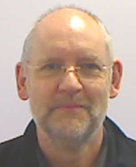 Professor Peter Redgrave works at the Sheffield University and lectures in the Department of Psychology. He says that his research philosophy assumes that to diagnose and correct what has gone wrong in a complicated system like the brain, it is helpful to have a good understanding of its normal function. In his talk he explained what Parkinson’s disease is, what causes it and what methods are being used to control it.
Professor Peter Redgrave works at the Sheffield University and lectures in the Department of Psychology. He says that his research philosophy assumes that to diagnose and correct what has gone wrong in a complicated system like the brain, it is helpful to have a good understanding of its normal function. In his talk he explained what Parkinson’s disease is, what causes it and what methods are being used to control it.
It is a neurological disease resulting in the inability to initiate movement (Akinesia), it causes slow movements (Bradykinesia) and results in a resistance to passive movements (Rigidity), and finally, tremors. Patients often exhibit a forward tilt of the head, rigidity and trembling of the head, a mask-like face, reduced arm swinging, a shuffling gait with short steps, and rigidity and trembling of the extremities.
Parkinson’s is the second most common degenerative disease after Alzheimers. About 0.3% of the population of industrialised countries suffer from it. It is more likely as people age: 1% over 60 and 4% over 80. However 5 – 10% of cases have young onset, between 20 and 50 years. There does not seem to be any pattern to its cause, although clusters of cases do occur in areas of the world. One was near to a wood pulping works in the USA, suggesting a chemical pollution cause. Is it an industrial disease? It did not appear in historical accounts before the Industrial Revolution, but did appear before the discovery of electricity, so it probably is not linked to electrical signals, radio waves, tv signals or mobile phones transmissions.
Parkinson’s disease affects the part of the brain called the basal ganglion, which is critically involved in selecting actions. The Basil Ganglion has been found in vertebrate animals for 400 million years.
The brain has two types of behavioural control systems. Goal directed control and habitual control. Prof. Redgrave gave the example of a learner driver concentrating on steering and watching the traffic and trying to judge when to change gear. He is using goal directed control. Whilst an experienced driver will ‘automatically’ change gear when engine revs or car speed ‘tells’ him it should happen. Most of the time the driver will not know what gear the car is in but it will ‘feel’ right, and this driver is using habitual control.
Another example was when he bought a new house. He had turned left for many years at a junction to go to his old house, but he needed to go straight on to get to his new house. On his way home he used goal directed control to get to his evening meal and went straight on, but if he gets distracted by thinking of a problem at work or of the talk he has to give to Probus, he could sometimes use habitual control and turn left on the route he had taken for years before.
Dopamine cells produce a neurotransmitter called dopamine, which is critical in resolving these options, and the dopamine cells appear to be dying in people with Parkinson’s disease. It seems that, when the dopamine cells die the habitual control system no longer works. Many of the habits of the previous life are lost. This seems to explain the shuffling gait because the person has to concentrate on how and where to put his feet and keep his balance at the same time. He has lost the ‘habit’ of walking. He will often stop when walking around his own home to concentrate on how to negotiate around the furniture. He may have lost the habit of working a zip, of fastening buttons or of tying shoe laces.
It can be treated using Dopamine- but they are only effective for 5 to 7 years and during this period the dosage has to be increased because diskinesea progressively gets worse. Another treatment is called Basal Ganglion Lesions which is an operation where small parts of the brain are removed. Deep brain stimulation is also effective but can be very dangerous. It involves inserting an electrode into the brain and sending a small current to a very specific area producing seemingly miraculous results. However if the electrode is not placed exactly at the right place it can have disastrous. For this reason it is considered only for very severe cases because if the electrode is not placed exactly where it needs to go, the patient will be no worse off than before. However, with new technologies and more accurate methods of scanning the body, this may become the treatment of the future.
